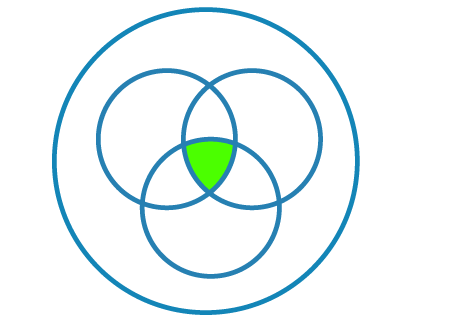Conjunction in Discrete Mathematics
Logical reasoning is an important skill that can be used in various fields like engineering, science, and as well as our daily life activities. We can also use logical reasoning in mathematical problem-solving strategies. With the help of logical reasoning and given facts, we can quickly get a conclusion. There are various kinds of logical connections to solve problems in mathematics. Some of them, the commonly used connectives are described as follows:
- Implication
- Negation
- Disjunction
- Equivalent
- Conjunction
In this section, we are going to learn about one of the connectives called Conjunction. We will learn the definition, examples, rules, and truth tables of conjunction.
Definition of Conjunction
When we add the two statements with the help of ‘AND’ symbol, then it will be known as conjunction. For conjunctions, the combined compound statement will be true if and only if both statements are true.
Suppose there are two statements, i.e., “circles are curves” and “parallelograms are rectangle”. Now we will make a compound statement by combining both statements with ‘and’ like this “circles are curves and parallelograms are rectangle”. When both the statements are true, only then this newly created compound statement will be true. The compound statement will be false if only one statement is true and another one is false.
For example, the same would be true if the two statements were “Harry wants to become cricketer” and “Jack wants to become Engineer”. If we combine both the statements with the help of ‘and’ to make “Harry wants to become cricketer and Jack wants to become engineer”, then for this compound statement, both the statements must be true. The diagram of conjunction is described as follows:

Conjunction in Discrete mathematics
The conjunction can be described as a statement, which can be formed by adding two statements with the help of connector AND. The symbol ∧ is used for the conjunction. We can read this symbol as “and”. If two statements, x, and y are joined in a statement, then the conjunction can be indicated symbolically in the form of x ∧ y. This statement will be true when both the combined statements are true. In all the other cases, it will be false. The conjunction of x and y is shown in the following image:

Rules of Conjunction
- If both the combined statements are true, only then the conjunction statement will be true. In all the other cases, it will be false.
- This process is very similar to AND gate, which is covered by the topic Gate logic.
- The symbol ∧ is used to indicate the conjunction. We can read this symbol as “and”, which is a type of logical connective.
- We normally use the alphabetical letters to represent the statements. Suppose there are two statements, X and Y. When we add a conjunction connector, then the statement will become a compound statement. In this case, the compound statement is represented as X ∧ Y, and it will be read as “X and Y”.
Conjunction Truth table
With the help of truth table, we can understand the final value of the compound statement, which is based on the values of individual statements. In the following truth table, all the possible combinations are represented. In the truth table, a true value is indicated with the help of letter ‘T’, and a false value is indicated with the help of letter ‘F’. In the following truth table, we have two statements, X and Y, and a compound statement X ∧ Y. Now, we have to make a truth table of these statements.
| X |
|---|
